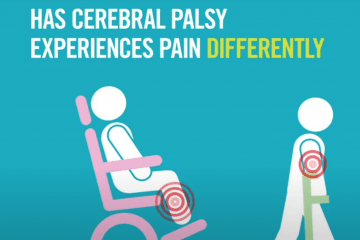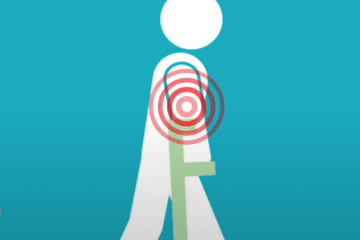
Pain is common in people with cerebral palsy with over 75% of individuals with CP reporting that they experience pain.
Constant or recurring pain is a very common physical concern of individuals with cerebral palsy (CP), often beginning in childhood but becoming more intense and frequent over the lifespan. Here are some facts about pain in CP and measures that can be taken to alleviate this chronic problem.
This section looks also at common causes for pain, assessments for identifying pain as well as emerging treatments. Left untreated pain can adversely impact activities, participation, and quality of life.
-
Stories
Learning to Deal with Pain Shelby Nurse discusses how pain has been part of the reality throughout her life. In this video Shelby talks about what strategies and pain management techniques have worked for her and how this have...
-
Get the Facts
Understanding Pain with Cerebral Palsy Fact Sheet The Cerebral Palsy Foundation has created a factsheet to help guide you in understanding and treating pain with CP. This fact sheet has been created for individuals with cerebral palsy to provide...
-

How to Get Quality Sleep with CP and/or Chronic Pain I suppose there has to be one silver lining that comes out of being sheltered in place for months on end (due to Covid-19): I’ve finally been catching up on sleep. The recommended nightly hours of sleep is between 7 and 9 hours . For me, getting a good night’s sleep has been the best way to regain a sense of control and ease during such unnerving times. Not only does sleep improve mood and productivity, but it also strengthens your immune system . However, sleep is a delicate topic of discussion...
-
Expert Videos
Common Causes of Pain 
-
Expert Videos
Everyone Experiences Pain Differently 
-
Expert Videos
Pain Assessment Toolbox for Kids with Disabilities 
-
Expert Videos
Understanding pain evaluation in cerebral palsy 
-
Relevant Research
Spasticity-related pain in children/adolescents with cerebral palsy. Part 1: Prevalence and clinical characteristics from a pooled analysis We studied how common pain was thought to be due to muscle spasticity in the legs or arms is in children/adolescents with CP.
-
Relevant Research
Spasticity-related pain in children/adolescents with cerebral palsy. Part 2: Part 2 IncobotulinumtoxinA efficacy results from a pooled analysis 
-
CPF Live
CPF LIVE! with Mary Gannotti: Pain Across the Lifespan CPF Executive Director Rachel Byrne and Mary Gannotti, PhD, PT discuss pain across the lifespan in cerebral palsy.
1 in 2 people with cerebral palsy live in chronic pain.








